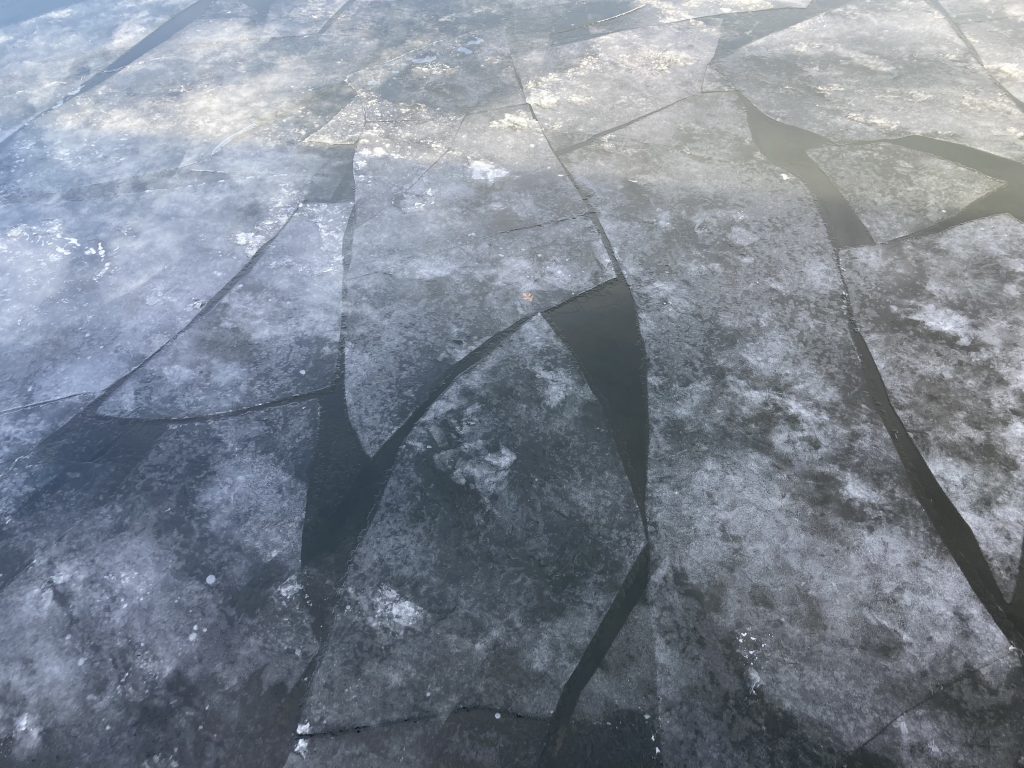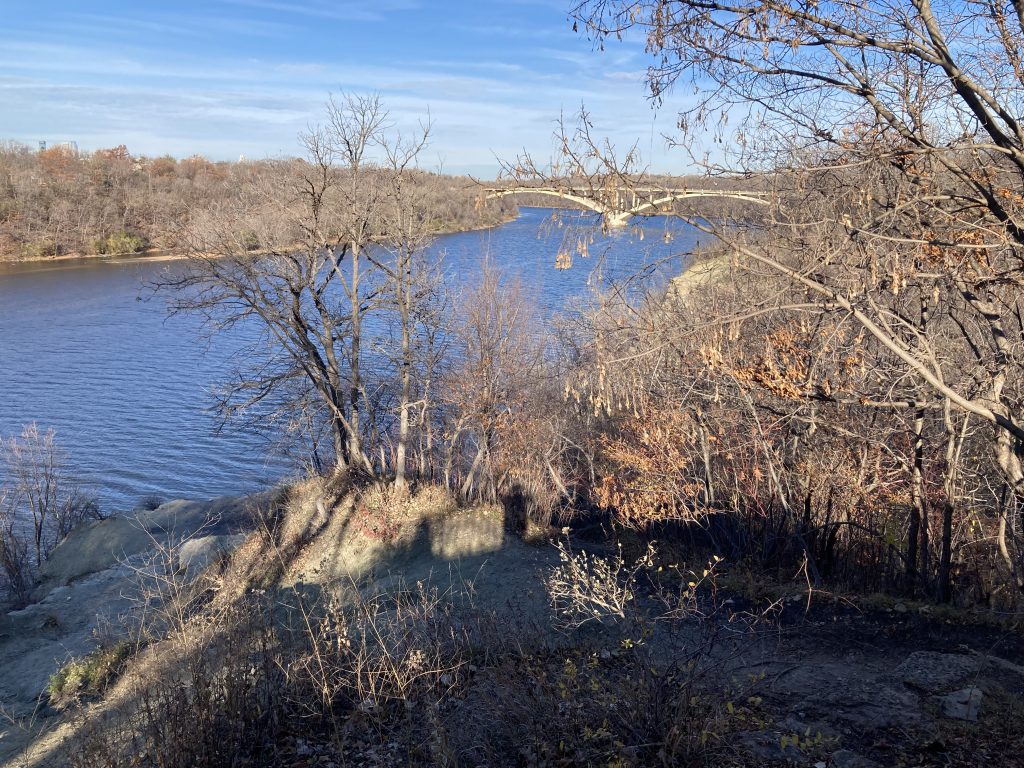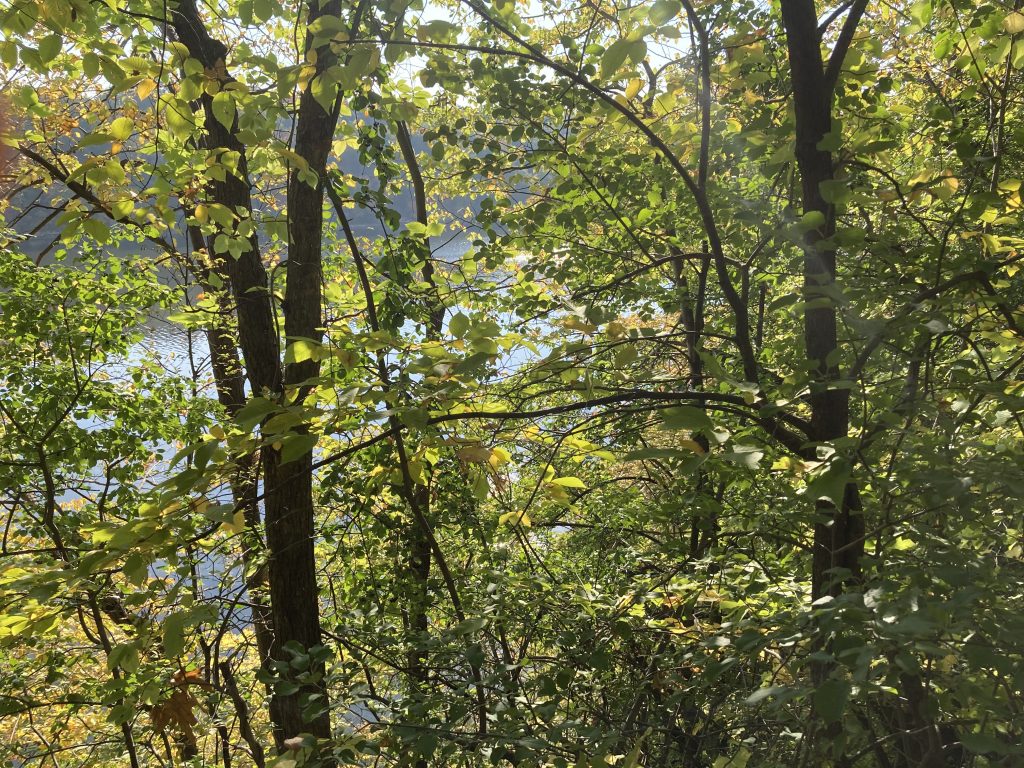2.75 miles
trestle turn around
73 degrees
dew point: 63
Ugh! Too warm for me today. I wanted to get up earlier, so I went to bed at 9:45, but I still slept poorly and didn’t wake up until 8. A small victory: I wanted to turn around at a mile, but I kept going until I got to the trestle. Took a walk break, then ran a faster mile. I heard rowers and kids yelling. Greeted Dave, the Daily Walker and Daddy Long Legs. Dodged a pack of people emerging from the rowing club entrance. Admired the cottonwood fuzz looking light green on the edge of the trail. Counted the stones stacked on the ancient boulder: 3, with another stone waiting for a friend. Stopped and stared at the ironwork of the trestle stretching to the east bank of the river.
before the run
Yesterday, this was the poem of the day:
Altitude/ Airea D. Matthews
Icarus, he advised,
heed the warning: don’t fly
too near the sun or sea;
stay the path.
But I mistook the sky for an iris,
and entered at the northern horizon,
where map edges blister,
and the compass wasps.
I was dutiful but unwooed
by chisel and bench, contracts
scribbled in fig sap, or watching
Ariadne ungold time.
What awe is there
in earthen labyrinths?
Wax molds itself sublime,
shapes wings each night.
Light refracts my name in
dialect only moths comprehend.
I belong elemental, where trees
chance to become constellations,
where the bar-headed goose flies
past with the heart of a clock and
Zeus is a silver kite tethered
to Olympus by harp strings
trembling an offering.
Of bliss? To remember
the why of it all.
Bliss is a body absconding
warp speed toward
a dwarf star whispering,
Unsee the beheld.
My fall, well, yes,
those depths matter less.
What I learned by height—
that’s the story.
Iris? A flower? Part of the eye?
map edges blister
compass wasps
I love these nouns as verbs
ungold time — love how that sounds, but what does it mean to ungold something? to tarnish it? Looked up Ariadne — from Green mythology, gave Theseus a thread to help him survive the labyrinth, kill the Minotaur, known to some as goddess of weaving, also her diadem ends up in the sky as a constellation
light refracts in dialect only moths comprehend — I might want to use that — so good
a goose with the heart of a clock, to belong elemental
bliss
the why of it all
bliss is a body
Unsee the beheld — I want to devote some time to thinking through what this idea might mean to me
And here’s the poet’s expanation:
About this Poem
“‘Altitude’ reimagines the myth of Icarus not as a cautionary tale of hubris, but as a meditation on ecstatic pursuit, disobedience, and the search for transcendent knowledge. The speaker rejects Daedalus’s pragmatic warnings, drawn instead to a metaphysical journey—flying not for safety or ambition, but to answer an elemental, inner urge to transform, no matter the consequence.”
during the run
As I suffered through my run, when I wasn’t thinking about wanting to stop or how hot it was, I thought about the command, Unsee the Beheld. I held onto the thoughts and spoke them into my phone at the end of the run:
Unsee as different than not-seeing (which I ‘ve thought/written about before). Not seeing is a static thing; you just don’t see it. To unsee is more active and also suggests a process of unravelling which is where my vision is at.
A few minutes later in the walk, I thought about flipping the phrase to, behold the unseen.
after the run
I like thinking about to unsee as a verb, an act, a process, a type of prayer? Just as seeing is not a static thing, where you simply see, but a process of light and signals and filtering and guessing by the brain, unseeing is a process of slow (or sporadic) unravelling then adapting — a brain doing mysterious and magical things with the scrambled and limited data it receives, a mind developing new ways to witness/behold without stable and dependable eyes.
And now I’m thinking of unseeing as eroding/erosion and the creation of the gorge. Rock erosion occurs in 2 main ways at the Mississippi River Gorge: 1. soft sandstone slowly and gradually wears away as it encounters water and air and 2. this wearing away weakens the foundation for limestone until it breaks. My unseeing process could be similar: the slow and gradual dying/not working of cell cones until a final break and no central vision. Is this how it will happen? Maybe, but maybe not.
a volta
A few months ago, I briefly wrote about the volta. When? Just remembered: it was during my study of time and thinking about the cyclical time and turning while I was listening to the Byrds — to everything turn, turn, turn. This morning, reviewing a poem I posted on this day in 2022, I think I found a good example of it in Ada Limón’s poem, Calling Things What They Are. For much of the poem, she is writing about what a difference it makes to know the names of birds or trees and how she likes to call things in the natural world what they are. Then she ends the poem with this:
I like to call things as they are. Before, the only thing I was interested in was love, how it grips you, how it terrifies you, how it annihilates you, and resuscitates you. I didn’t know then that it wasn’t even love that I was interested in, but my own suffering. I thought suffering kept things interesting. How funny that I called it love and the whole time it was pain.
a thought on time from the novel. The Bear
I’m reading a beautiful novel, The Bear by Andrew Krivak. A bear and a young girl are discussing how all creatures can speak. Skeptical, the girl asks, What about the trees? After instructing her on how and where to listen to the trees the bear said,
the voices of the trees were the voice of the forest, and that when they spoke, they spole with such indifference to time that it would take the girl several moons to hear one of their conversations, the better part of one just to hear a single word.
bike: 8.6 miles
lake nokomis and back
84 degrees
Another anxiety-free bike ride, and no knee pain. Hooray! Hotter and harder on the way there. It felt like I was biking into some wind. The bike back was wonderful. A little cooler, the glow of a lower sun and my satisfied muscles. I thought about how I don’t ever want to take biking for granted. I never know when my last cone cells will go and I’m not sure what that will mean for biking. Will it be too scary and unsettling? I want to bike more this summer.
5 bike things, 5 swimming things
- bike: nearing lake nokomis I heard a siren, then saw an ambulance by the lake. Was it coming from the beach?
- bike: 3 or 4 kids yelling and running across the path toward the creek with inner tubes. A dad called out to one — not to caution or scold but to collect their glasses
- bike: a recumbent bike, slow and low to the ground
- bike: going slower so I could keep a good distance between me and a group of bikers up ahead. The last one in line was wearing a dark pink shirt
- bike: turning onto the part of the path that’s between hiawatha and the creek and looking down at a part of the creek that I don’t know very well
- swim: olive green water
- swim: waiting in the shallow water before it started, the kids were so LOUD — I flinched as they screamed near my ear
- swim: the visibility underwater was good — I saw a lot of pale legs kicking
- swim: clear enough that I could see how deep the water was as milfoil stretched up from the bottom — delightfully creepy!
- swim: my sparkle friends were joined by shafts of light
swim: 3 loops
lake nokomis open swim
84 degrees
Got to the lake early — a half hour before it started — to make sure I got a spot for my bike and my bag. I was hoping they’d start as early as they did on Tuesday. Nope, but still 5 minutes early. My left shoulder hurt a little at the beginning, but by the end it was okay. It wasn’t the easiest swim — I’m out of shape — but it was still amazing. I kept thinking about how I’ll feel after a couple of weeks of steady swimming: amazing.
At one point when I was ready to be done, I had a flash of a thought: what would happen if my body just shut down right here in the middle of the lake. No panic, just curiosity. At another point, I thought about unsee the beheld, both the unsee and beheld part. what was beheld? swimming, a practice in unseeing.
This just popped in my head: See no cola, Hear no cola, Drink uncola. That’s on my favorite sleeping bag from the 70s.



